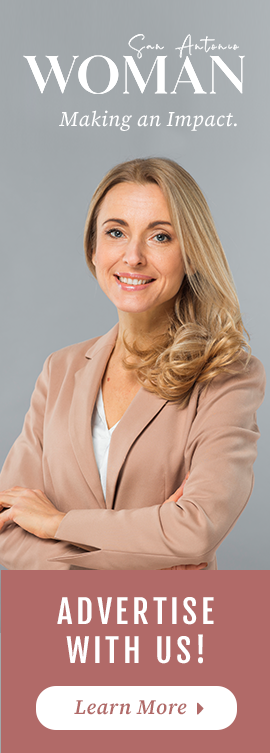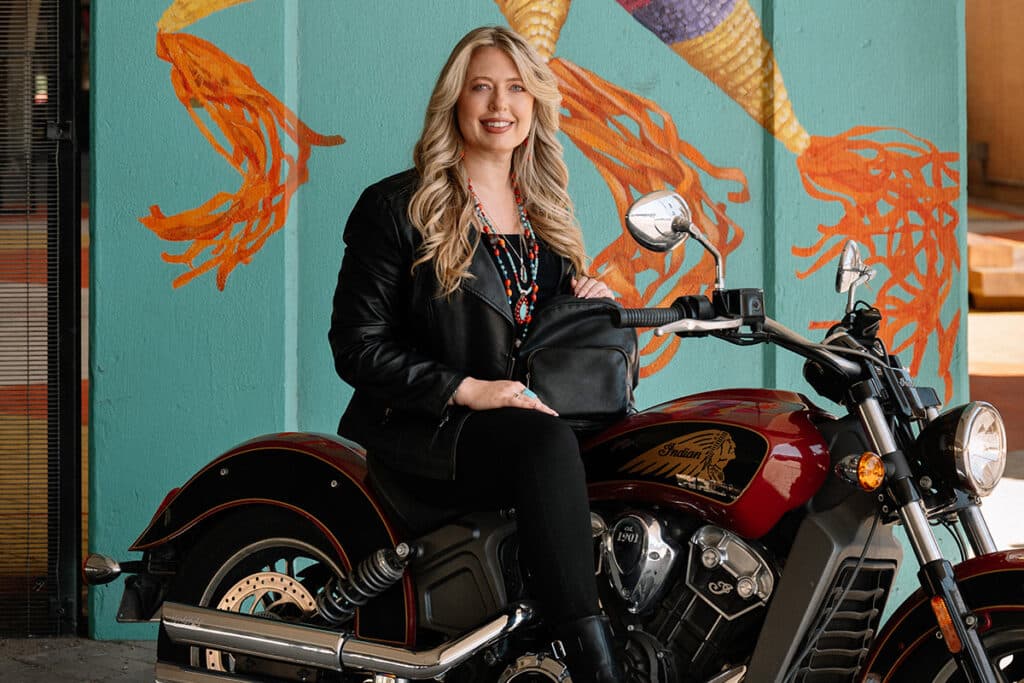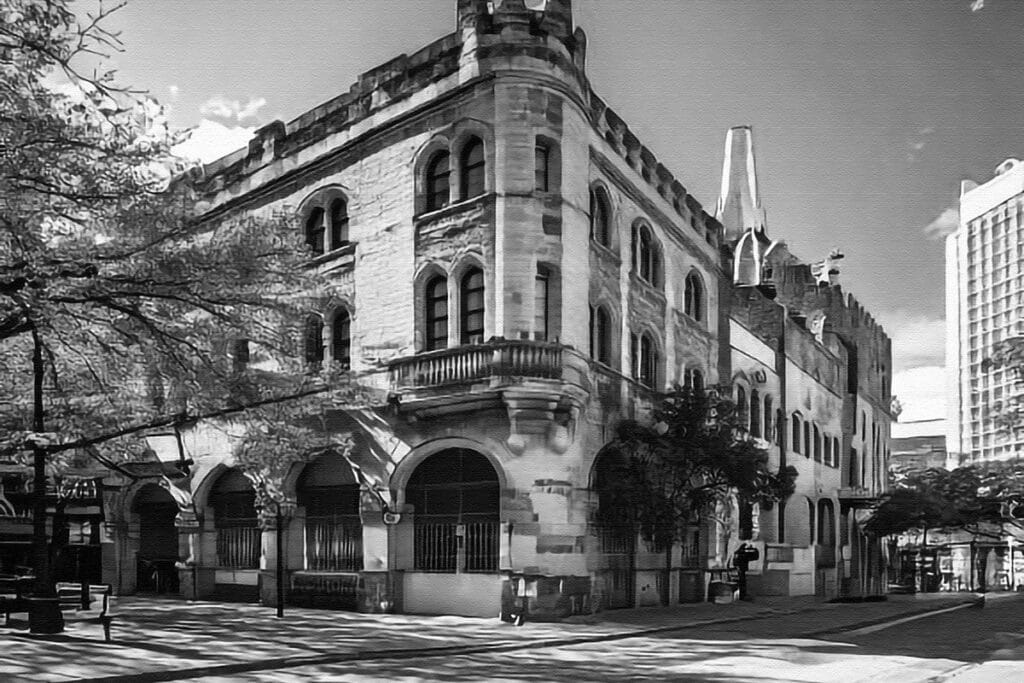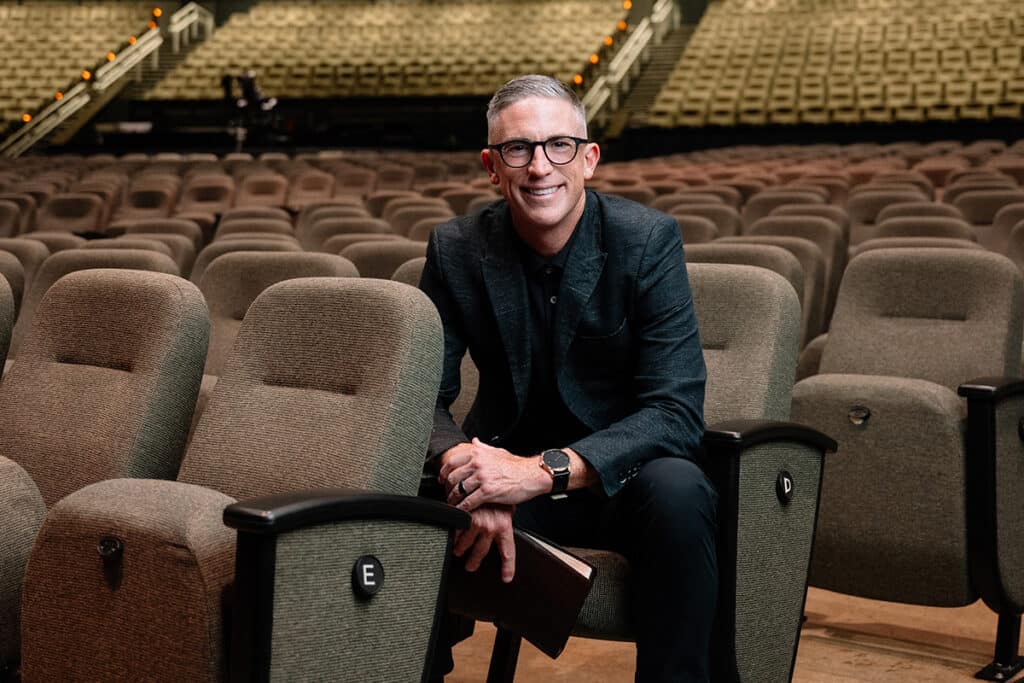During this election cycle, we’ve heard about a lot of different subspecies of voters: security moms (most concerned about terrorism), NASCAR dads (this year’s counterpart to soccer moms) and iPod voters (youthful and techno-savvy). Political scientist Amy Jasperson thinks the media might pay more attention to another group, big enough to swing the outcome any way they choose — if only they would.
“Single women are the largest group of non-voters in our democratic process,” she says. “Twenty-two million women didn’t vote in the last election. How crazy is that? Your vote is your voice.”
She herself is part of a sub-subgroup that has been dubbed the “Sex and the City” voters: single professional women. At 34, Jasperson is not married (“but I’m not opposed to it”), is successful in her academic career (with an impressive array of scholarly publications to her credit) and wears great shoes (today, a pair of pointy, chocolate-brown calfskin spikes, and yes, she can walk fast in them). But she’s not part of the non-voting contingent, having registered in college and voted in every presidential election from 1988 onward.
To Jasperson, an assistant professor of political science at UTSA, opting out of an election is close to unthinkable. Brought up in Holden, Mass. — “a quintessential New England small town founded in the 18th century” — she grew up with parents who attended town-hall meetings and school-board sessions. Her parents have roots in Wisconsin, where the family cranberry bog still bears fruit for the nation’s Thanksgiving tables. While members of the clan have differing political viewpoints, they’re all interested in politics. In an election year, Jasperson says, “Someone’s always happy at Christmas.”
The way she votes, however, is not on the table during this interview. Partisanship is not her job, as a teacher of American and Texas politics and other courses on political communication and psychology. That doesn’t mean students aren’t curious, though: “You can see students trying to figure out, ‘Hmm, what is she?'”
Here’s a hint — or is it? The first presidential election Jasperson remembers well is 1980’s contest between incumbent Jimmy Carter and challenger Ronald Reagan. “When we took a vote in school, I was the only person supporting John Anderson, the independent candidate,” she says. “In seventh grade, I first learned the idea of ‘throwing away your vote.'”
In high school, after a family acquaintance died in a car crash, Jasperson was active in Students Against Driving Drunk (SADD) and volunteered at a phone bank, calling voters about a community issue. But when she chose to attend Wellesley College — a highly selective women’s college in Wellesley, Mass. — it wasn’t out of feminist convictions.
Though she’s now a firm believer in the advantages of single-sex education for women, Jasperson says, “I’ve only truly appreciated them as time away (from college) has increased.” She chose her Seven Sisters alma mater “not because, but in spite of the fact that it’s a women’s college,” citing Wellesley’s academic opportunities, access to Boston’s cultural institutions, small class size and “beautiful campus.”
She graduated in 1991, magna cum laude, with a double major in political science and art history — not so unrelated a combination as it might seem. “Art history is very political,” Jasperson says, remembering a college course on Gender and Power in Art in which she studied images of women across periods and cultures. Now, her research on the effect of media — news and advertising — on political decisions often deals with images: how wartime violence is portrayed on television, the way visual distortions in negative advertising affect voters’ opinions.
After earning her doctorate in political science at the University of Minnesota, Jasperson came to UTSA, where she has taught since 1999. Before visiting the school, she says, “I had never been to Texas, except to fly through Dallas on the way to California.” Going south, she says, was “a great adventure,” one that reactivated her college connections. When she knew she would be coming to San Antonio, Jasperson called the Wellesley alumnae office and got the name of a graduate here, who offered advice on where to live and steered the newcomer toward the Wellesley College Club of San Antonio — of which Jasperson is now president. “In college, you can make friends for life,” she says. “I didn’t appreciate that there, but I do now. Women help each other out.”
For a genetic northerner, Jasperson seems to be adjusting well to her new landscape, especially the weather. Her down parka — “like the ones they wear in the movie Fargo” — stays stashed at the back of the closet until she needs it for holiday visits. “I never knew how great life could be when it’s nice most of the year,” she says. The political climate also is different: majority Republican rather than the predominantly Democratic atmosphere of her home state.
Fortunately, opposing viewpoints fascinate her; in fact, they’re the focus of her professional life. Two years ago, while working with a colleague on a paper comparing American and Arab coverage of the war in Afghanistan, Jasperson helped to come up with the idea for the Media and Elections Studio at UTSA of which she is now director. A student in her graduate class at that time was comparing a State of the Union address by President George W. Bush to the television news analysis of the speech. “He was shocked by the issues the news focused on (and) the varying degree to which they emphasized domestic and foreign policy,” Jasperson says. Other projects by students in her Mass Media and Public Opinion class also seemed to demand “more hands-on investigation” than they could access through print and online media, she says. With the growth in influence of the electronic media, she says, “More and more, (viewers) rely on media spin to give a legitimizing impression to what we’ve just seen. The media have the ability to determine debate within a political campaign through the day-to-day issues they cover.”
The studio’s relatively small space is filled with television sets and video recorders, an editing suite and computers with access to a database of political articles and advertising. On the walls, examples of political mailing pieces and print ads are grouped by campaign. Here, students study media influence on local, statewide and national elections from a variety of perspectives: television vs. print coverage of scandal, the effect of Spanish-language advertising, the role of free media (talk-show appearances) and many other topics. One of Jasperson’s professional goals is to raise funds for a satellite dish, “so we can see coverage (of U.S. elections) from Europe, Africa and the Middle East.”
This presidential election year, with Texas voters expected to prefer their former governor, “the party and the money are not coming to Texas,” says Jasperson. In the absence of frequent candidate appearances and ever-changing political advertising on local television, UTSA students still can study what’s happening on media in the highly contested swing states. They may access daily tracking polls and an advertising archive on the National Journal Web site and may even view political commercials. (“Friends all over the country are sending me tapes,” Jasperson says, smiling.)
Students’ interest might be piqued by the nonpartisan movements urging young people to vote — an uphill battle, considering declining rates of youth participation. Voting “has not yet become part of their generation’s culture,” says Jasperson, who teaches around 450 students, including many taking required government courses. The young are “potentially the most mobile group of voters,” she says, “who might be registered somewhere other than where they’re living.” Registration, absentee voting and going to the polls all “take some effort,” she says. “Students are busy. On top of that, they don’t feel politicians speak to their issues and interests.”
Though more women are going to college than men, Jasperson says, many young women “are passing on the right to vote, deciding not to participate because they don’t know enough.” When the conflicting, complicated messages reflected on the news media don’t lead to a clear choice, Jasperson recommends, “Look up the issues on a (candidate’s) Web site.” Young women, she says, “have forgotten or were never aware of the (women’s) issues debate 30 years ago: reproductive rights, sex education, equal pay for equal work, the Equal Rights Amendment.” Women who value participation, Jasperson says, “have to tell (their younger counterparts) about the women who suffered, who sacrificed for the right to vote, to get an education.”
Jasperson herself has been involved in mentorship programs and served as adviser to UTSA’s women’s soccer club — a post she’s happy to say has been abolished, now that women’s soccer has become a full-fledged sports program at the university. Sports, Jasperson says, “are an important way to build girls’ self-esteem and to teach team-building and leadership skills.” She played field hockey in high school (as a wing, a position with high scoring potential) and continues to compete in triathlons, golf and on a team in the San Antonio Women’s Soccer Association.
“I’ve become a part of every place I’ve ever lived,” Jasperson says. “I’ve always looked for ways to participate.” Mindful of the advice she received from the fellow Wellesley alum — “pick your battles” — Jasperson decided to volunteer last year with the Smoke Free San Antonio Coalition, an educational awareness campaign about the dangers associated with exposure to tobacco smoke — so-called “secondhand smoking.” As chairwoman of the group’s advocacy committee, Jasperson was tasked with dealing with the news media.
“There were strong feelings on both sides,” says Jasperson. On Smoke Free San Antonio’s side were activists who believe that when smokers’ personal choices bring health risks to others into public places, government has an obligation to get involved. On the other side were representatives of the local business community who feared a smoking ban in public places could have an adverse effect on the city’s economy.
In an effort to treat both sides fairly, media reports on the campaign sometimes struck Jasperson as overly cautious about portraying one side more favorably than the other. Studies conducted by medical and public-health schools on health risks from exposure to cigarette smoke, she found, were treated as more-or-less equal to what she recalls as the more emotionally based predictions of some in the business community.
“It’s hard to get media to see a particular point of view,” she says. Jasperson is not talking about getting the press to advocate a point of view, but simply to understand and report it accurately, particularly if the supporting evidence is complicated or downright dry. The way in which one survey of local restaurants was treated by the press is one example, she says. Its statistics seemed to show that a majority of local restaurants already were smoke-free — but only part of the restaurants surveyed had responded, and many other places that served food had not been included. “The difficulty in correcting misinformation once it finds its way into media (reports) is the most striking lesson I took from (participating) in practical politics,” she says.
Policy issues “may be difficult to simplify,” Jasperson says, “hard to break down into a seven-second sound bite.” While the press is protected with special rights in the Constitution, some of its decisions are made from a corporate, business perspective — such as the major television networks’ decision not to air gavel-to-gavel coverage of this year’s national political conventions. At the same time, with the reality of a competitive news environment, coverage is more likely to shift to events that aren’t particularly significant in themselves —such as former Democratic presidential candidate Howard Dean’s “scream” after a loss in the Iowa caucus.
“Reporters are doing their jobs, trying to get something different,” Jasperson says. “Something that stands out as against the norm resonates with reporters, who pick it up and run with it, while people on both sides stand by, ready to spin.”
Jasperson isn’t interested in running for office herself — the negativity and destructive effect on personal lives turn her off — but says she looks forward to having choices between thoughtful, well-qualified candidates. On her computer, Jasperson keeps a file of inspirational quotes from historical figures, both men and women. One that comes to mind this season is from the late Paul Wellstone, a former college professor turned senator from Minnesota: “Politics is what we create by what we do, what we hope for and what to imagine. Politics is about the improvement of people’s lives.”
It’s an idealistic vision, but one she hopes her students will someday see on their television screens.
Author: Paula Allen
Photographer: Janet Rogers




